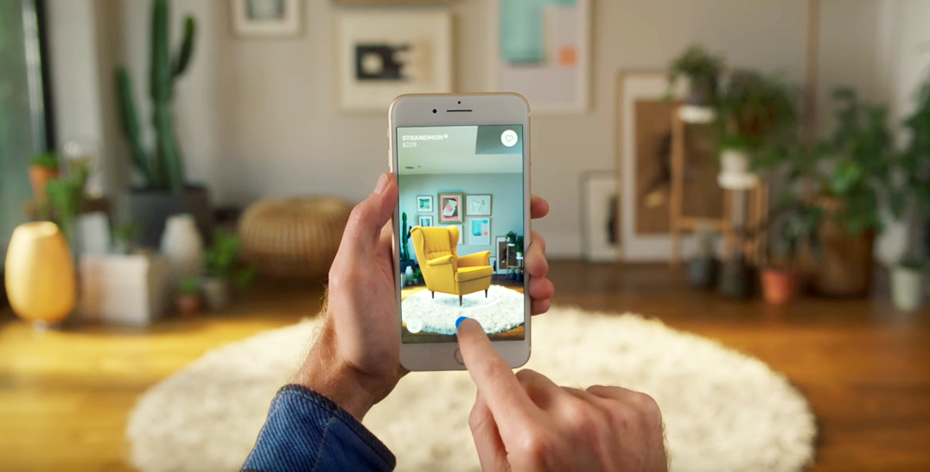The advertising market is becoming dynamically interactive – that is an undeniable fact. This trend is significantly driven by the growing popularity of Smart TV, which we now perceive as an established advertising channel. In many households, smart TVs have become multimedia centres connected to internal data sources. In this specific environment, every advertising format is transformed into an interactive experience, often highly personalised thanks to direct access to viewer information – whether through Automatic Content Recognition (ACR) or even the home screen. A study by LG Ad Solutions last year showed that LG Smart TV users visit the home screen an average of three times a day. This indicates consistent and repeated engagement.
However, Smart TV is not the only technology that has been on the rise recently. The commercial boom in headsets and the metaverse is also contributing significantly to the growing interactivity of advertising. Apple has already launched its XR (eXtended Reality) solution, Apple Vision Pro. According to the latest information, the Meta Loma VR headset should be available next year for less than a thousand dollars. Together with Google, these tech giants are competing to offer the most interesting innovations. Demand for augmented reality (AR) remains strong, and brands are responding by developing their own solutions or migrating to platforms such as Snap Lenses. Growth in investment across the industry is therefore a logical consequence.
According to a recently published study by PwC, the global entertainment and media market will reach $3.5 trillion by 2029, with revenue from Connected TV alone expected to reach $51 billion. In terms of advertising, digital formats already accounted for approximately 72% of all revenues in 2024, and this share could rise to 80% by 2029. Another study, published by BrandXR, reports that by the end of last year, AR-enabled devices already had 1.73 billion users. The mobile AR market could exceed $8.6 billion this year. The findings also show that 35% of business leaders have already implemented AR/VR technologies, with 70% of Fortune 500 companies actively integrating so-called phygital technologies – strategies connecting the physical and digital environments.
A new standard in interactivity
One of the most prominent trendsetters in AR advertising is the American technology company BrandXR, which specialises in immersive marketing. It offers brands its own AR platform that allows them to create, publish and manage campaigns without the need for programming. It was this platform that was behind the groundbreaking partnership between BrandXR and LG Smart TV, which enabled interactive AR ads to be broadcast directly on the television screen. Viewers could take a virtual tour of a car from the comfort of their own homes, freely rotating it, zooming in or viewing it from the inside. Another campaign offered a 3D visualisation of the application of make-up and other facial products – directly on the screen of a smart TV with a built-in camera.
Video: Create Your Own Augmented Reality Experience in Minutes with BrandXR's No-Code Platform!
This innovative approach has clear benefits for brands’ advertising strategies. According to BrandXR’s analysis, the proactive experience not only increased viewers’ purchase intent but also their engagement. Users spent significantly more time with the ad, which led to higher conversion rates. Compared to traditional spots, AR advertising held their attention significantly longer – thereby extending the time the viewer was in contact with the advertising brand. Nevertheless, for many users, AR technology on the television screen remains a relative novelty that requires a certain amount of education. However, the collaboration between BrandXR and LG suggests that interactivity in advertising is no longer a vision of the future, but a real part of the present.
AR overlay advertising in the CTV environment is probably the most popular among advertisers today. However, it is by no means the only direction in which interactive marketing is heading – but it does illustrate well what the “advertising revolution” is all about. The combination of AR and CTV creates an experience that does not require the use of a mobile phone. The viewer is not taken out of their home environment, which enhances their receptiveness to the content being displayed. This approach is also followed by advertisements based on a partnership between Geenee AR and Flowcode, which literally draw the viewer “into” the ad – just scan the QR code and you can instantly enjoy a WebAR experience or virtual try-on. These solutions are no longer the exception.
Video: What is a Flowcode QR Code?
Billboards come to life
AR campaigns are not only found at home – they also appear naturally in public spaces. Just as AR is transforming traditional television advertising formats, it is also transforming the form of outdoor campaigns (OOH). A good example of this is AR billboards or murals, which, according to BrandXR data, increase engagement by up to 300%, with an average interaction time exceeding 75 seconds and up to 67% of users sharing their experience on social media.
Video: Vodaphone’s Augmented Reality Billboards Dominate Out-of-Home Advertising
Toyota took a similar interactive approach when it launched its Toyota Crown model in 2023. In collaboration with Yahoo Creative Studios, it created a campaign that connected CTV, DOOH and a mobile WebAR application. The entry point was again a QR code, this time placed on a billboard, which transported viewers into a virtual space. There, they could place the car in their own environment in a photorealistic 3D model, rotate it, change the colour of the bodywork, and even ‘sit behind the wheel’ and go for a virtual test drive. Everything ran without the need to download an app, and Toyota literally moved the showroom into the living room. At the same time, it collected data on user interest – favourite configurations, colours and interaction points.
Video: Toyota Crown Augmented Reality Ad Experience
VR and 360° video campaigns offer an even more immersive experience. They are particularly popular in areas such as automotive, real estate and tourism. According to Number Analytics, these formats achieve 46% higher engagement than traditional digital advertising. Users spend an average of 7.3 minutes with them – significantly more than the 2.1 minutes spent with regular videos. Typical examples of use include virtual showrooms, tourist simulations and 3D property tours. However, they are also significant in classic interactions with consumer products, where VR advertising achieves significantly higher conversion rates.
Welcome to the phygital world
Given the above, it is no surprise that brands are slowly but surely acquiring a taste for AR and VR. They are primarily attracted by classic metrics such as engagement and recall – in this case, however, on steroids. According to BrandXR, campaigns using AR generate up to three times higher brand lift, 70% higher brand recall and up to four times longer engagement compared to classic mobile advertising. At the same time, they are on average up to 59% cheaper. These benefits are also confirmed by data from popular social networks Snapchat and TikTok, where AR campaigns achieve a breathtaking 460% return on investment (ROI). Other benefits – longer attention spans and higher conversions – have been described above and are dominated by VR and 360° video formats.
Video: Say Hello to IKEA Place
All this shows that brands willing to take risks have found the phygital approach to be very successful. The AR market is growing rapidly, with mobile AR now dominating, accounting for more than 80% of advertising spending. Global giants such as Ikea (Ikea Place) and Sephora (Try-On) are rapidly implementing it into their e-commerce strategies and cannot praise it enough – according to their statements, it helps both reduce the volume of returned goods and increase conversions. However, mobile AR is catching up year on year with its competitor, location-based AR for OOH, which, according to the latest data, is growing in popularity the fastest. Advertising DOOH formats are again used by Ikea and Sephora, for example.
Video: Sephora Virtual Artist App
Highly effective, but still inaccessible
However, not all that glitters is gold. The use of AR and VR in television advertising still faces barriers that will not be easy to overcome. Toyota had to contend with the fact that a large proportion of users simply do not know what to do with these ads. This means that brands still need to provide users with clear instructions on how to activate and control these features along with the ad. Similarly, AR billboards – although they offer an interaction time of up to 75 seconds and up to seven times higher exposure – are relatively technically demanding. As a result, WebAR applications can take longer than three seconds to load after scanning a QR code, which is a critical threshold that up to 20% of users cannot tolerate. However, BrandXR has also run a campaign for an automotive client that recorded 56,000 AR activations in four weeks, an average engagement of 2.3 minutes and a 27% increase in showroom visits.
Accessibility and inclusion are separate issues. According to data from Yahoo Finance and TV Tech, only about 10% of television advertisements – whether linear or in a Connected TV environment – include basic accessibility features such as subtitles, audio descriptions or contrasting design. Yet subtitles can play a key role: more than three-quarters of younger viewers (especially Millennials and Gen Z) watch programmes in their native language with subtitles, which, according to research, increase brand recall by 8% and improve emotional connection with the brand by 18%. Statistics also suggest that up to 83% of globally broadcast advertising formats still do not meet even basic accessibility standards.
The future has already begun
All the problems are solvable, and there is no denying that the future has already begun. The year 2029 – when AR advertising is expected to exceed $8 billion – will likely mark a turning point, after which companies will no longer be able to afford to ignore these technologies. At the same time, we will witness a transformation of the advertising world under the influence of artificial intelligence and spatial computing, which will enable advertisements to respond dynamically to the environment and data in real time. Products such as Apple Vision Pro, Meta Quest 3, Ray-Ban smart glasses and XREAL glasses are likely to become mainstream consumer products, breaking down the remaining barriers that currently make AR advertising difficult for some viewers to grasp.
Video: Apple Vision Pro Reveal (4K)
Interactive, augmented and immersive – this is the future of TV and OOH advertising. It is changing the way we perceive brands, how we communicate with them and how we respond to them. AR and VR technologies are transforming the screen from a one-way channel into a dynamic environment that engages, entertains and persuades the viewer. Brands that are not afraid to experiment and invest in these new formats are gaining an advantage – not only technologically, but above all in terms of relationships. They are entering a space where the boundaries between the real and the digital are blurring, and where creativity is finally no longer limited by the frame of the screen.
Are you ready to turn every interaction into an experience?

